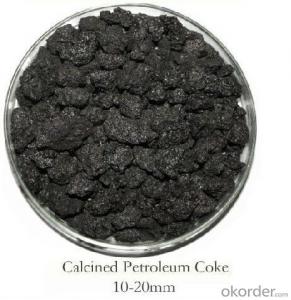Calcined Petroleum Coke Carbon Additive 5-10mm
- Loading Port:
- Qingdao
- Payment Terms:
- TT OR LC
- Min Order Qty:
- 10 m.t
- Supply Capability:
- 500000 m.t/month
OKorder Service Pledge
OKorder Financial Service
You Might Also Like
Specification of Calcined Petroleum Coke:
Calcined Petroleum Coke comes from delayed coke which extracted from oil refinery. Although Calcined Petroleum Coke contains a little bit higher level of sulfur and nitrogen than pitch coke, the price advantage still makes it widely used during steel-making and founding as a kind of carbon additive/carburant
petroleum coke price is lower than graphite pet coke. It is widely used by most foundry plants.
Our product has follwing advantages:
The morphology, chemistry and crystallinity of recarburizer have a major impact on the overall casting cost. The combined application and cost benefits, enable foundries to manufacture castings in a highly cost effective manner.
Reduces:
- Recarburiser consumption
- Power consumption
- Inoculant consumption
- MgFeSi consumption
- Furnace refractory wear
- Scrap rate
- Tap to tap time
- Slag inclusions risk
- Chill
Increases:
- Casting microstructure
- Productivity
- Process consistency
Carbon Recovery:
Compared with calcined petroleum coke, acetylene coke and
graphite electrode scrap, our yields the highest carbon
recovery and fastest dissolution time
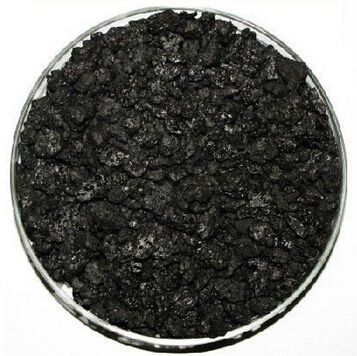

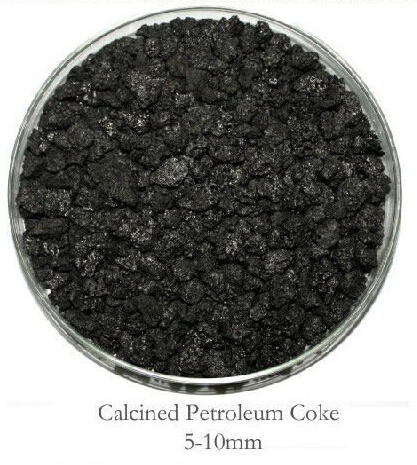

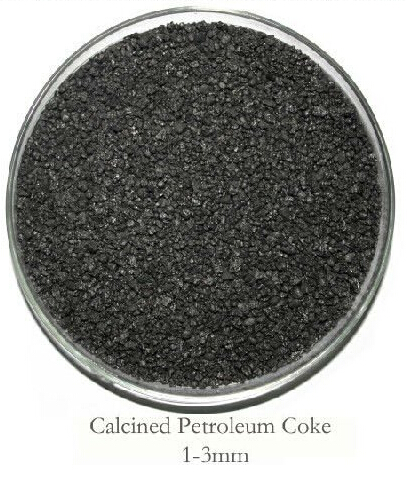
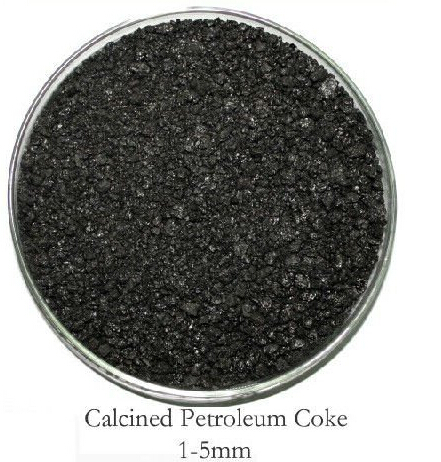
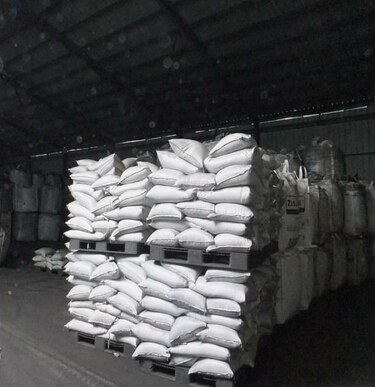

- Q:What are carbon-based superconductors?
- Superconductivity, a phenomenon where electrical resistance drops to zero at low temperatures, is exhibited by carbon-based superconductors. Unlike conventional superconductors, which are typically metallic elements or alloys, carbon-based superconductors are primarily composed of carbon atoms. These materials possess a unique structure and properties that make them efficient conductors of electricity when cooled below a critical temperature. Carbon-based superconductors can be divided into two main types: organic superconductors and fullerene superconductors. Organic superconductors consist of carbon-based molecules, such as organic salts or polymers, that form a crystal lattice structure. Extensive research has been conducted on these materials, revealing promising superconducting properties at low temperatures. On the other hand, fullerene superconductors are composed of carbon molecules arranged in a cage-like structure called fullerenes. The most famous fullerene is C60, also known as a buckyball, which has 60 carbon atoms arranged in a soccer ball-like shape. By doping these fullerene cages with specific elements like alkali metals or transition metals, their superconducting properties can be enhanced. What makes carbon-based superconductors particularly fascinating is their potential for high-temperature superconductivity. While most conventional superconductors require extremely low temperatures close to absolute zero (-273.15°C or -459.67°F) to exhibit superconductivity, certain carbon-based superconductors have been found to retain their superconducting properties at relatively higher temperatures. This characteristic is significant for practical applications as it facilitates easier cooling and opens up possibilities for widespread use of superconductivity in fields like energy transmission, magnetic levitation, and quantum computing. However, it is crucial to note that carbon-based superconductors are still an active research area, and numerous challenges remain in understanding their mechanisms and enhancing their superconducting properties. Nevertheless, the discovery and exploration of these materials hold great promise for advancing the field of superconductivity and enabling new technological breakthroughs.
- Q:How are carbon fibers used in manufacturing?
- Carbon fibers are used in manufacturing for their exceptional strength, light weight, and high stiffness properties. They are commonly used as reinforcement materials in various industries such as aerospace, automotive, sports equipment, and wind energy. Carbon fibers are incorporated into composites to enhance the strength and durability of products, making them ideal for applications where weight reduction and structural integrity are crucial.
- Q:When will amines be fertilized?
- Avoid high temperature applications. The temperature is below 20 DEG C when ammonium bicarbonate is relatively stable, high temperature or moisture in the product exceeds a certain standard, is easy to be decomposed into ammonia and carbon dioxide emissions in the air, causing loss of nitrogen fertilizer. According to the test results show that the winter crops better than urea and ammonium carbonate. Because the temperature is low in winter, the process of urea conversion is long, but the ammonium carbonate can be directly absorbed without conversion. It is beneficial to the early growth and fast growth of winter crops. In addition, when applied to the soil ammonium bicarbonate, ammonium ion dissociation can be directly by soil colloid adsorption, and urea to winter crop soil, urea was dissolved in the soil solution in the molecular state, but not by soil colloid adsorption, it is more likely to cause the loss of nutrientsThe use of ammonium bicarbonate does not mix with alkaline fertilizers, which can lead to loss of nitrogen nutrients, resulting in low fertilizer efficiency. Using ammonium hydrogen carbonate friends should know that not with urea and ammonium hydrogen carbonate mixed fertilizer, ammonium bicarbonate if mixed with urea, urea conversion rate will not only extend, and will accelerate the volatilization of urea.Ammonium bicarbonate extremely volatile, so to avoid the ground using ammonium bicarbonate, ammonium bicarbonate has strong corrosion on leaf blade, easy to burn, can not be used as a foliar spray. There is one thing to note is that if the soil drought, even deep application coverage, can not be dissolved in ammonium bicarbonate, better soil moisture using ammonium bicarbonate, can reduce the volatilization loss, improve efficiency
- Q:What are fossil fuels and how are they formed?
- Fossil fuels, derived from ancient plants and animals, are natural resources utilized by humans for centuries as non-renewable sources of energy. Coal, oil, and natural gas comprise the three primary types of these fuels. The genesis of fossil fuels commences with organic matter sourced from plants and animals. Over millions of years, this organic material becomes deeply buried within the Earth's crust. Through the accumulation of sediment layers, the organic matter experiences increased pressure and heat, resulting in the process of fossilization. Regarding coal, the organic matter primarily consists of compacted and heated plant material. As the pressure and temperature rise, the plant material undergoes a gradual chemical transformation, eventually becoming coal. The formation of oil and natural gas follows a slightly different path. It originates from the remains of minuscule marine microorganisms, such as plankton, which settle at the ocean floor. Over time, these organic materials become buried beneath sediment layers, where they endure immense heat and pressure. Under these conditions, the organic matter undergoes a conversion into a mixture of hydrocarbons, serving as the primary constituent of oil and natural gas. Subsequently, the oil and gas migrate through porous rocks until they become trapped by impermeable layers, giving rise to oil or gas reservoirs. Overall, the formation of fossil fuels constitutes a gradual geologic process taking millions of years. It necessitates specific conditions of heat, pressure, and burial to convert organic matter into coal, oil, or natural gas. Due to their limited availability and the environmental consequences associated with their combustion, there is an increasing emphasis on transitioning towards renewable energy sources as a more sustainable alternative.
- Q:What are the effects of carbon emissions on the Arctic ecosystem?
- Carbon emissions have significant effects on the Arctic ecosystem. The increased levels of carbon dioxide in the atmosphere contribute to global warming, causing the Arctic to warm at a faster rate than the rest of the world. This leads to the melting of sea ice, loss of permafrost, and rising sea levels. These changes disrupt the delicate balance of the Arctic ecosystem, affecting various species, including polar bears, walruses, and seals, as well as their prey. Additionally, the acidification of the oceans due to carbon emissions further impacts marine life, such as plankton and shellfish. Overall, carbon emissions have detrimental consequences for the Arctic ecosystem, threatening its biodiversity and functioning.
- Q:What is carbon offsetting in the travel industry?
- Carbon offsetting in the travel industry refers to the practice of compensating for the carbon emissions produced during travel activities by investing in projects that reduce or remove an equivalent amount of greenhouse gases from the atmosphere. As travel contributes significantly to global carbon emissions, carbon offsetting has emerged as a way for individuals and businesses to take responsibility for their environmental impact and strive towards more sustainable practices. When individuals or companies choose to offset their travel emissions, they calculate the carbon footprint of their trip based on factors like distance traveled, mode of transport, and fuel consumption. This calculation helps determine the amount of carbon dioxide equivalent emitted during the journey. To offset these emissions, they then invest in projects that reduce or remove the same amount of greenhouse gases from the atmosphere, such as renewable energy projects, reforestation efforts, or energy efficiency initiatives. The concept of carbon offsetting aims to achieve carbon neutrality, where the emissions produced are balanced by an equivalent reduction or removal of emissions elsewhere. By investing in offset projects, travelers and travel companies can effectively mitigate their environmental impact and contribute to overall efforts in combating climate change. Carbon offsetting in the travel industry not only helps reduce the carbon footprint of individual trips but also encourages the development of sustainable practices within the tourism sector. It provides travelers with the opportunity to minimize their environmental impact by supporting projects that promote renewable energy, conserve biodiversity, or improve local communities' livelihoods. However, it is essential to ensure that carbon offset projects are credible and deliver genuine emission reductions. Verified standards and certifications, such as the Gold Standard or Verified Carbon Standard, help ensure the integrity and transparency of offset projects. It is also important to prioritize efforts in reducing emissions directly, such as using more fuel-efficient transportation or opting for low-carbon alternatives, before relying solely on offsetting. In conclusion, carbon offsetting in the travel industry allows individuals and businesses to take responsibility for their carbon emissions by investing in projects that reduce or remove greenhouse gases. It is a proactive approach towards minimizing the environmental impact of travel and promoting sustainable practices within the tourism sector.
- Q:What are the alternatives to fossil fuels for energy production?
- There are several alternatives to fossil fuels for energy production, each with its own unique advantages and challenges. These alternatives include: 1. Renewable Energy Sources: Renewable energy sources, such as solar, wind, hydroelectric, and geothermal energy, harness the power of natural resources that are constantly replenished. Solar energy utilizes the sun's rays to generate electricity through photovoltaic cells, while wind energy converts the kinetic energy of wind into electrical power. Hydroelectric energy is generated by the force of flowing water, typically from dams or rivers, and geothermal energy taps into the heat generated by the Earth's core. These sources offer clean and virtually limitless energy, reduce greenhouse gas emissions, and promote energy independence. However, they may require a significant initial investment and have limitations based on geographic location and weather conditions. 2. Nuclear Energy: Nuclear power plants generate electricity through nuclear fission, which involves splitting atoms of uranium or plutonium to release energy. Nuclear energy is highly efficient and produces no greenhouse gas emissions during operation. It has the potential to provide consistent baseload power and can significantly reduce dependence on fossil fuels. However, it raises concerns about the storage and disposal of nuclear waste, the risk of accidents, and the potential for nuclear weapons proliferation. 3. Bioenergy: Bioenergy involves utilizing organic materials, such as agricultural waste, wood pellets, or dedicated energy crops, to produce heat, electricity, or biofuels. Biomass can be burned directly or converted into a gaseous or liquid form, such as biogas or bioethanol, to replace fossil fuels. Bioenergy has the advantage of being a readily available and carbon-neutral energy source. However, it may compete with food production, require large amounts of land, and raise concerns about deforestation and biodiversity loss if not managed sustainably. 4. Tidal and Wave Energy: Tidal and wave energy technologies harness the power of ocean currents and waves to generate electricity. These sources are predictable and have the potential to provide a consistent and reliable energy supply. However, the technology is still in its early stages, and high upfront costs, environmental impacts, and limited geographic availability can be challenges. 5. Hydrogen Fuel Cells: Hydrogen can be used as a fuel source in fuel cells to generate electricity. Hydrogen fuel cells combine hydrogen with oxygen from the air, producing electricity and water vapor as byproducts. Hydrogen is abundant and can be produced from various sources, including renewable energy. However, challenges include the high cost of production, storage, and distribution infrastructure, as well as the need for advancements in hydrogen storage technology. It is important to note that a combination of these alternative energy sources, along with improvements in energy efficiency and conservation, is likely to provide a more sustainable and resilient energy future, reducing our reliance on fossil fuels and mitigating the impacts of climate change.
- Q:Who can explain that bare feet on fire carbon don't burn feet?
- The fire is red carbon, but no signs of fire and water after scald. Actually, that's a very simple physical phenomenon. The most mysterious matter where we can buy, can make the carbon fire red instantly cool, people ran fast, naturally not hurt hair.These two substances, one is white borax, and the other is red cinnabar (also known as cinnabar). It turns out that the crystals are dissolved because they absorb large amounts of heat. When borax or cinnabar scattered on the surface of carbon fire, because the heat will make the wood surface temperature drop.
- Q:Can carbon 14 identify the age of porcelain?
- Identification of porcelain by carbon 14 is not very accurate.The so-called carbon fourteen assay, radiocarbon dating, uses the carbon fourteen, which is widely found in nature, to measure the age of animals and plants. In prehistoric and ancient, the smaller the impact of human activities on the earth's environment, and carbon in nature fourteen proportions remain constant, animals and plants in the survival time, due to its in vivo The new supersedes the old. sake, carbon fourteen also remained constant; however, the once dead, in fourteen carbon will continue to decay, the half-life is 5730 years, in the sealed state and the outside world is obviously different, which is the principle of carbon fourteen dating. We must note that animals and plants belong to the organic matter. However, most cultural relics, such as porcelain, pottery and bronze, are inorganic. Therefore, the application of carbon fourteen dating in archaeology is very limited.
- Q:What are the advantages of carbon-based fuel cells?
- Carbon-based fuel cells offer several advantages that make them a promising technology for the future. Firstly, they have a higher energy density compared to conventional batteries, meaning they can store and deliver more energy per unit weight. This allows for longer operating times and greater power output, which is particularly beneficial in applications requiring high power density and long-range capabilities, like electric vehicles. Secondly, carbon-based fuel cells boast a faster refueling time than conventional batteries. While it can take hours to recharge a battery, refueling a carbon-based fuel cell can be done in a matter of minutes. This significant advantage reduces refueling downtime and enables more convenient and efficient usage of the technology. Furthermore, carbon-based fuel cells have a lower environmental impact compared to traditional combustion engines. They produce only water and heat as byproducts, making them clean and environmentally friendly. This is in contrast to internal combustion engines that emit harmful pollutants contributing to air pollution and climate change. Another advantage of carbon-based fuel cells is their versatility and compatibility with existing infrastructure. They can easily be integrated into current energy systems, facilitating a smooth transition from fossil fuels to cleaner energy sources. This compatibility makes carbon-based fuel cells a viable option for various applications, from portable electronics to residential power generation. Lastly, carbon-based fuel cells have the potential to contribute to energy independence. As carbon-based fuels can be derived from renewable sources like biomass or waste, they offer a sustainable and domestically sourced energy solution. This reduces dependence on foreign oil and enhances energy security for countries. In conclusion, the benefits of carbon-based fuel cells include higher energy density, faster refueling time, lower environmental impact, compatibility with existing infrastructure, and the potential for energy independence. With these advantages, carbon-based fuel cells have the potential to revolutionize the energy landscape and provide a sustainable and efficient alternative to conventional energy sources.
1. Manufacturer Overview |
|
|---|---|
| Location | |
| Year Established | |
| Annual Output Value | |
| Main Markets | |
| Company Certifications | |
2. Manufacturer Certificates |
|
|---|---|
| a) Certification Name | |
| Range | |
| Reference | |
| Validity Period | |
3. Manufacturer Capability |
|
|---|---|
| a)Trade Capacity | |
| Nearest Port | |
| Export Percentage | |
| No.of Employees in Trade Department | |
| Language Spoken: | |
| b)Factory Information | |
| Factory Size: | |
| No. of Production Lines | |
| Contract Manufacturing | |
| Product Price Range | |
Send your message to us
Calcined Petroleum Coke Carbon Additive 5-10mm
- Loading Port:
- Qingdao
- Payment Terms:
- TT OR LC
- Min Order Qty:
- 10 m.t
- Supply Capability:
- 500000 m.t/month
OKorder Service Pledge
OKorder Financial Service
Similar products
New products
Hot products
Related keywords


